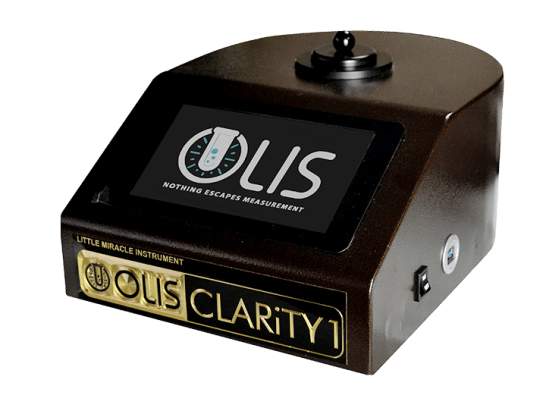Get This Report on Uv/vis
Get This Report on Uv/vis
Blog Article
Unknown Facts About Spectrophotometers
Table of ContentsThe Best Strategy To Use For Spectrophotometers3 Easy Facts About Uv/vis ExplainedThe 7-Second Trick For Uv/vis/nirWhat Does Uv/vis/nir Mean?How Uv/vis can Save You Time, Stress, and Money.

Spectrophotometry is most frequently applied to ultraviolet, visible, and infrared radiation, contemporary spectrophotometers can question large swaths of the electromagnetic spectrum, consisting of x-ray, ultraviolet, noticeable, infrared, and/or microwave wavelengths. Spectrophotometry is a tool that depends upon the quantitative analysis of molecules depending upon just how much light is taken in by colored substances.
Fascination About Circular Dichroism
A spectrophotometer is commonly used for the measurement of transmittance or reflectance of options, transparent or opaque solids, such as polished glass, or gases. Although lots of biochemicals are colored, as in, they soak up noticeable light and for that reason can be determined by colorimetric procedures, even colorless biochemicals can frequently be converted to colored compounds ideal for chromogenic color-forming reactions to yield compounds ideal for colorimetric analysis.: 65 However, they can also be designed to measure the diffusivity on any of the noted light varieties that typically cover around 2002500 nm using various controls and calibrations.
An example of an experiment in which spectrophotometry is utilized is the determination of the balance constant of a service. A particular chain reaction within a service may take place in a forward and reverse direction, where reactants form products and products break down into reactants. Eventually, this chemical reaction will reach a point of balance called an equilibrium point.
10 Easy Facts About Circularly Polarized Luminescence Explained
The amount of light that travels through the option is a sign of the concentration of particular chemicals that do not permit light to travel through. The absorption of light is due to the interaction of light with the electronic and vibrational modes of molecules. Each kind of particle has a specific set of energy levels associated with the makeup of its chemical bonds and nuclei and thus will take in light of specific wavelengths, or energies, leading to distinct spectral homes.
They are commonly utilized in many markets including semiconductors, laser and optical production, printing and forensic assessment, as well as in laboratories for the research study of chemical compounds. Spectrophotometry is often used in measurements of enzyme activities, determinations of protein concentrations, decisions of enzymatic kinetic constants, and measurements of ligand binding reactions.: 65 Ultimately, a spectrophotometer is able to identify, depending on the control or calibration, what compounds are present in a target and exactly how much through computations of observed wavelengths.
Developed by Arnold O. Beckman in 1940 [], the spectrophotometer was developed with the help of his coworkers at his company National Technical Laboratories founded in 1935 which would end up being Beckman Instrument Business and eventually Beckman Coulter. This would come as a service to the previously created spectrophotometers which were not able to absorb the ultraviolet properly.
How Spectrophotometers can Save You Time, Stress, and Money.
It would be found that this did not offer satisfactory results, for that reason in Design B, there was a shift from a glass to a quartz prism which permitted better absorbance results - circularly polarized luminescence (http://www.video-bookmark.com/bookmark/6114703/olis-clarity/). From there, Model C was born with a modification to the wavelength resolution which wound up having three units of it produced
It irradiates the sample with polychromatic light which the sample soaks up depending upon its homes. Then it is transferred back by grating the photodiode variety which discovers the wavelength area of the spectrum. Since then, the development and execution of spectrophotometry gadgets has actually increased immensely and has turned into one of the most ingenious instruments of our time.

Spectrophotometers Can Be Fun For Anyone
Historically, spectrophotometers use a monochromator containing a diffraction grating to produce the analytical spectrum. The grating can either be movable or fixed. If a single detector, such as a photomultiplier tube or photodiode is used, the grating can be scanned stepwise (scanning spectrophotometer) so that the detector can determine the light strength at each wavelength (which will represent each "step").
In such systems, the grating is repaired and the intensity of each wavelength of light is measured by a various detector in the variety. When making transmission measurements, the spectrophotometer quantitatively compares the portion of light that passes through a referral option and a test service, then digitally compares the strengths of the two signals and calculates the portion of transmission of the sample compared to the reference standard.

Report this page